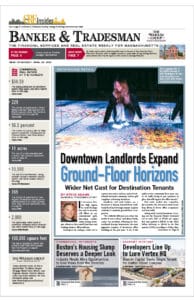
While we wait for more housing to be built, it will be hard to convince older homeowners to sell until interest rates come down. Photo by eMeLaR | iStock
It’s a fight to get an accepted offer.
In one corner: The Millennials, a massive population group, surpassing Baby Boomers in their sheer numbers. Seen lining the streets of our towns and cities each weekend at open houses, this group has launched forward into purchasing a home motivated by life changes like family starts, jobs and a yearn for community.
In the other: the Baby Boomers, who have established our neighborhoods as we know it, building communities of 1950 – 1970’s four-bedroom colonials on cul-de-sacs and neighborhoods. By now it was predicted that Baby Boomers, celebrating birthdays between 59 and 77 years old this year, would be shedding their large homes for smaller ones, either locally or on warmer southern shores.
But the reality, Baby Boomers are pushing off retirement, living longer and sitting on 2 percent to 3 percent interest rates or paid-off homes as they, too, are faced with few housing choices.
This population group’s decision to stay put has had a direct effect on Millennial and older Generation Z buyers struggling to find a home during a multi-year inventory shortage.
This past February in Massachusetts we saw the lowest number of single-family homes and condominiums for sale since the Massachusetts Association of Realtors began reporting data in 2014, an anemic 3401 homes for sale compared to 4,098 the year before. MAR further reported that the median sale price for single-family homes was up over last year, to $520,000.
We Need More Homes
For any meaningfully sustained increase in home sales, enough to effect year-over-year statistics, we will need more movement. Even with increased pressure on interest rates, qualified buyers have continued to march forward, providing little relief on the demand side. The solution lies on the side of supply, simply said, we just need more house to sell.
A greater number of homes on the market means two things need to happen; more sellers to sell and more builders to build.
We’ve received some assistance on the supply side from the Massachusetts attorney general’s office with recent guidance for towns about implementing new multifamily housing legislation that was passed under the Baker administration, known as the MBTA Communities Act. The intent of this legislation is to provide more housing in cities and towns served by the MBTA by incorporating at least one zoning district that allows the building of 15 housing units per acre.
Greg Vasil, CEO of the Greater Boston Real Estate Board, said “the law will have a major positive impact on commercial development in the commonwealth, in addition to providing more housing.”
The MBTA Communities law should not be the only focus on housing production in the suburbs. It may turn out to be more of a mandate to push planning rather than actual housing. Peter Forman, President of the South Shore Chamber of Commerce, has said “The law requires zoning, not actual permitting or construction. Towns should embrace it as a means to think about the best places to incorporate multi-family housing as part of larger community planning strategies. The strategy that will backfire, though, will be ‘just say no.’”
Interest Rates Will Get Sellers Moving
And for more sellers to sell, the story will be about interest rates. For Baby Boomers as well as any buyer who purchased during the most recent years, the lower rates of yesterday have compelled them to delay a next step in their housing journeys, whether that be to move up or to move down.
Recent financial news, with its undercurrents of sustained inflationary prices and turmoil in the banking section, concluded with a much anticipated and hoped-for 25-basis-pointincrease by the Federal Reserve last month. Although from a housing perspective any increase puts pressure on affordability and some buyers, the Fed’s job remains clear, to methodically and purposefully slow an overheated economy.

Carol Bulman
This “expected” result by the Fed actually caused mortgage interest rates to drop to their lowest levels since early February, by as much as a half of a percentage point. Many are now calling for rates in the 5 percent range by mid- to end of 2023, which will provide opportunity for sellers waiting on both rate reasonability and consistency before making their next move.
And finally, an additional bonus of a loosening gridlock will be more opportunity for buyers banished to the sidelines, including first-time buyers utilizing financial products as all-American as apple pie: VA, MassHousing, FHA and USDA mortgages. Many first-time buyers with down payments of less than 20 percent have been forced to sit by and watch while homes in their price range get picked up by cash-only and investor buyers.
Possibly a sign of the loosening of gridlock, the National Association of Realtors provided some welcome insight into February home sales, noting an end to a year-long decline of month over month decreases at the national level. NAR said that more housing and consistent interest rates will be the answer to a shift in supply, providing a late Spring housing market that could be much more balanced than we’ve seen in some time.
Carol Bulman is CEO and chairman of Hanover-based brokerage Jack Conway.





